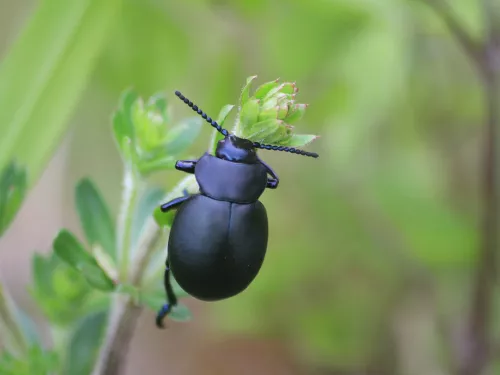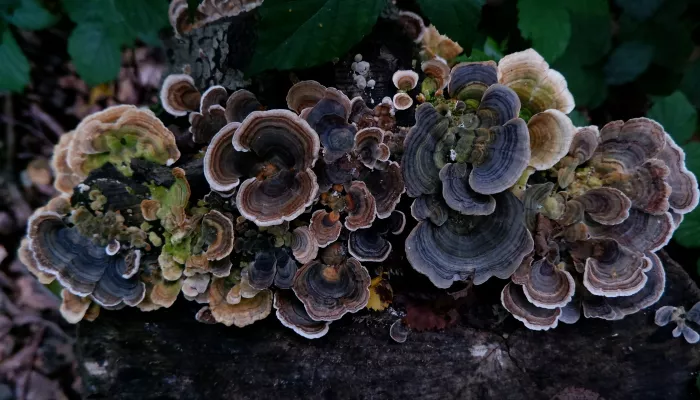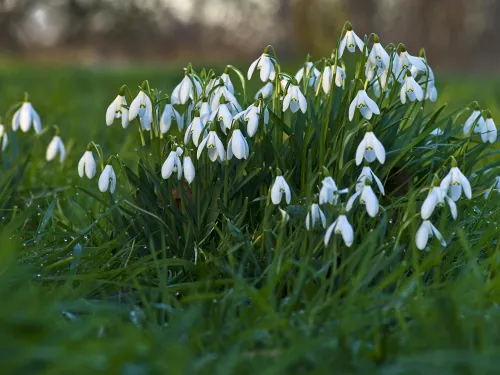
What’s the difference between bugs and beetles?
You’ll often hear the words ‘bug’ and ‘beetle’ used interchangeably – but they actually mean two different things. Let's explore the differences!

Most people don’t really think of fungi as much more than button mushrooms on their dinner plate. But the society we live in today is surrounded by evidence of the co-evolution between fungi and humans. Every time we butter our bread, we’re getting ready to eat a fungal creation. Bread can’t rise, nor could wine and beer ferment without the help of Saccharomyces cerevisiae or baker’s yeast. Something Louis Pasteur discovered in 1858 but humans have been doing for over 10,000 years.
If that doesn’t do it for you, how about thanking the fungal kingdom for that tasty cheeseboard you enjoy at Christmas. Penicillium camemberti and Penicillium roqueforti are responsible for camembert, brie, Cambozola, Roquefort, Danish blue and many more of our most loved cheeses.
Putting our dinner plates aside and taking a conservation lens, thanks to the work of Dr Suzanne Simard, fungi’s role in our forest ecosystems were recently brought to light. We already knew that some fungi form association with the roots of trees (dubbed mycorrhizal fungi) but Dr Suzanne Simard discovered that there are complex social systems at play underneath our feet. Fungal hyphae link every tree in the forest, protect saplings and offer essential nutrients to trees in return for some of the spare sugars that trees get from photosynthesis. Fungal hyphae may also be the carriers of the chemical alarm signals that are sent by one tree to prepare another for a pest attack and when a tree is on the brink of death, it may use the fungal network to send a substantial share of carbon to its neighbouring trees.
The magic of fungi has caught the modern world by storm, and it seems that fungi are being brought forward as solutions to many of our modern-day problems. Need to eat less meat, get your mycoprotein instead. Need an economic way to insulate homes, use fungal insulation. Looking for sustainable fashion, wear a fungal hat. Buildings, furniture and even plastics are being developed from fungi. And the ability for fungi to break down matter has scientists questioning if we can use them to reduce plastic pollution.
With many conservationists focusing their site surveys on botanical interests and animals, very little surveying of fungal diversity is being done in the UK – and that includes in Kent (though this has been improving in recent years). We’re still a long way from knowing all the species in the UK let alone the world and yet we continue to degrade our landscape and pull up fungal ecosystems without much thought – there is little protection for the fungal kingdom in UK law.
What needs to be done? Firstly, we need to get over our mycophobia and start to see the beauty in this weird and wonderful kingdom. Mushrooms for one thing are not to be feared. There are less poisonous mushrooms than there are poisonous plants. And no mushrooms can harm you just by touching them. A good start is to get out and start looking for mushrooms and learning to identify them. Start recording your finds on iRecord or iNaturalist (records normally checked by the county recorder) and help scientists better understand fungal distribution. Learning to identify fungi isn’t an easy task so it helps to have a helping hand. Joining groups like Kent Field Club or posting sightings to the Kent Fungus Group Facebook page can help you learn along the way.
Note about foraging: the other thing to be mindful of is mushroom picking. While mushrooms do reproduce clonally, sexual reproduction is still important in helping species evolve. In such an unpredictable climate, evolution could be the difference between a dying species and a thriving species. Wildlife also rely on many of our fungal species and with an increased number of mushroom pickers, our wildlife could suffer the consequences. We don't encourage picking on our reserves but there are sites where you can, just make sure to check with the landowner as it's illegal to uproot plants without landowners permission.
The tide is turning on our mycophobia and we're coming to appreciate this kingdom, much like ours, it's full of diversity, character and flair. A vital part of our cultural existence, mushrooms are something to be enamoured. Next time you take a walk in the countryside, consider that we may not have soil without fungi, our forest ecosystems may not exist without fungi, the natural world could not as easily be recycled without fungi. Look down and appreciate the hidden kingdom beneath your feet!

You’ll often hear the words ‘bug’ and ‘beetle’ used interchangeably – but they actually mean two different things. Let's explore the differences!

Wilder Grazing Ranger Volunteer Trainee, Ellie Edmondson, talks about the fell ponies on our reserves and what makes them great conservation grazers.

In February, the first British wildflowers are beginning to poke out from the seemingly dormant undergrowth, a sure sign that spring is on the way!